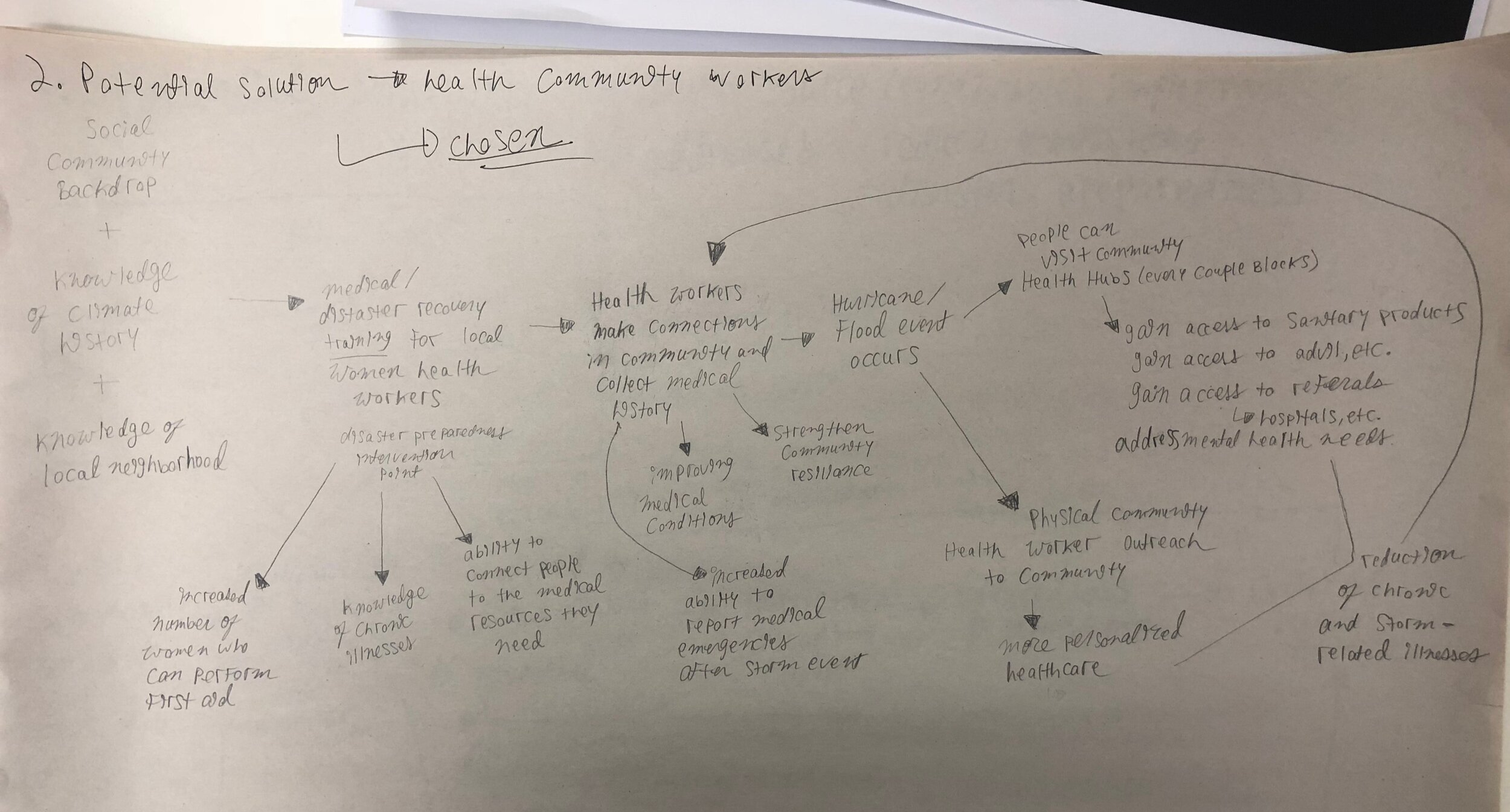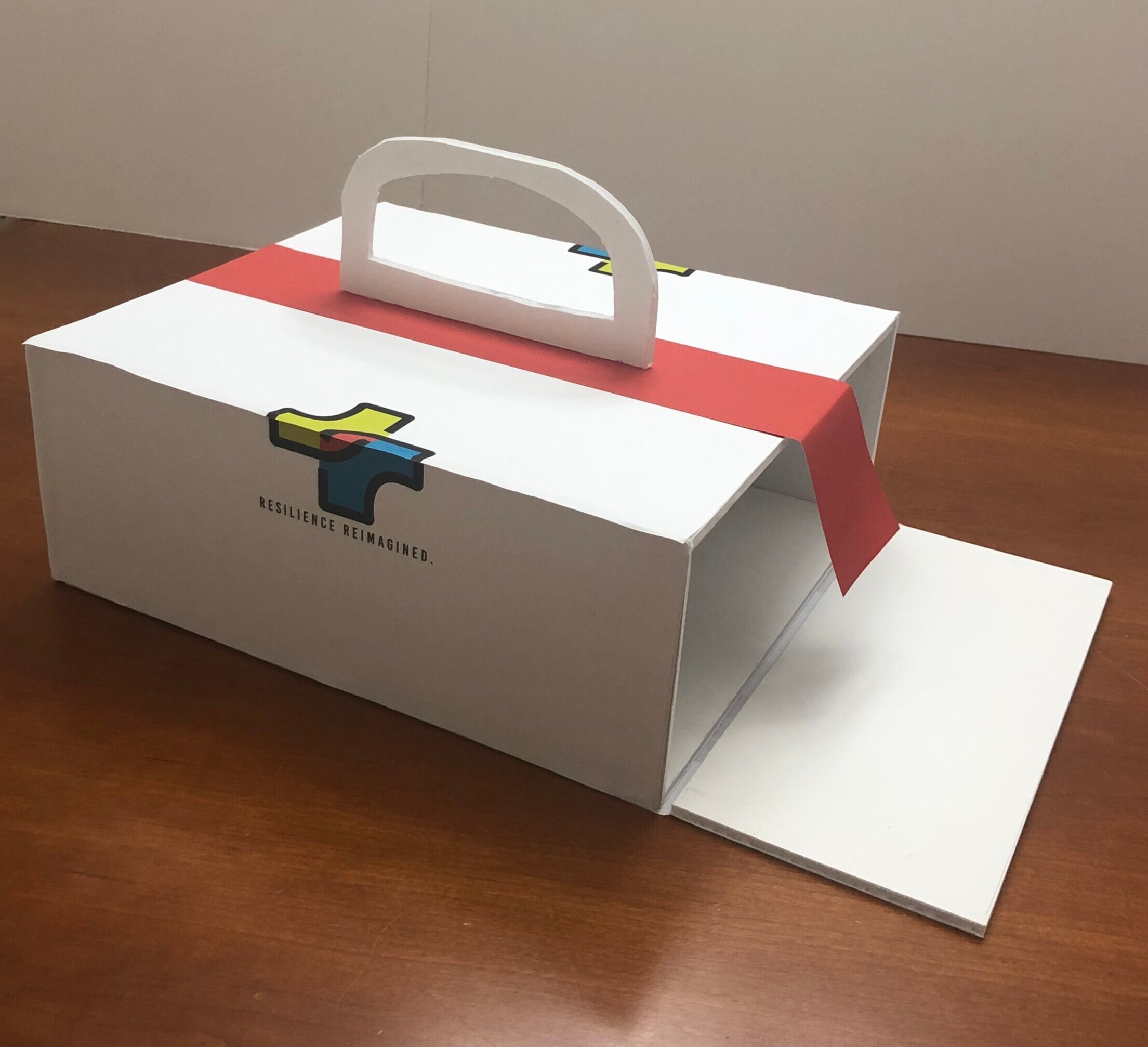Resilience Reimagined.
Address the exacerbated impacts on human health, due to rising C02 emissions, global temperatures, sea–levels, & the number of severe natural disasters worldwide.
Collaborator: Jennifer Ulloa
Gender, Health, & Resilience.
RWANDA’S COMMUNITY HEALTH APPROACH
MAP 1 (below)
This map compares global data surrounding rates of CO2 emissions, gender parity, female political empowerment, and healthy life expectancy, over time. Depending on existing health, gender and CO2 emission rates, not only would certain countries be more susceptible to natural disasters but once natural disasters occur, women, specifically women from lower socioeconomic statuses, would be the most vulnerable.
This analysis focused on the U.S., Rwanda, Nicaragua, and Norway. The U.S. has the highest rates of CO2 emissions, the lowest rate of gender parity, lowest rate of female political empowerment, and the worst healthy life expectancy compared to the other countries researched. Interestingly, Rwanda has the highest rate of gender parity, female political empowerment, and healthy life expectancy, as well as the lowest rates of CO2 emissions.
Looking at specific numbers, Rwanda was ranked 1st out of 155 countries for healthy life expectancy, while the U.S. was ranked 82.
One reason for this we has to do with the Rwandan Health Ministry training 45,000 people as community health workers, that are essentially community members who are trained in health and go house to house to provide care to people who normally don’t receive any
So even though Rwanda is one of the poorest countries in the world, they have one of the fastest growing economies in Central Africa. This got us to think, what can the U.S. learn from Rwanda to better gender parity, and better health outcomes? How can we create more resilience against a natural disaster caused by climate change?
Systemic intervention points.
In order to understand where potential intervention points lived, we mapped out the systemic nature of natural disasters and how they affect local communities. There are three potential intervention points in this system: reduce carbon emissions, disaster preparedness, and disaster recovery. We decided to look at women’s community involvement and a localized approach to healthcare as a potential solution for natural disaster preparedness and disaster recovery.
We chose to focus on East Harlem, N.Y. because East Harlem continues to rank among the highest in NYC for health disparities, which is deeply connected to income inequality and residential segregation by race. There is wonderful opportunity in East Harlem. There has been great local mobilization to address existing health disparities, and many of the leaders of local coalitions and organizations are female led.
This map explores the effects of East Harlem’s existing community backdrop (economic inequality, chronic health conditions, aging infrastructure, and growing population) on increased CO2 emissions, which increase the likelihood of natural disasters (specifically hurricanes/floods).
The Systemic Nature of Natural Disasters
The reduction of carbon emissions, disaster preparedness, and disaster recovery are all potential intervention points within this system.
East Harlem’s Chronic Crisis
East Harlem has some of the highest rates of chronic diseases, according to the NYC Department of Health and Mental Hygiene.
Resilience Reimagined.
Community Health Workers in East Harlem
Personalized chronic illness disaster toolkit (below)
From this research, we have developed a localized community and women operated 365 day approach to disaster resilience and personalized healthcare.
What if we applied the expanded Rwandan Community Health Worker model to East Harlem?
We have designed an initiative run by women, where women are trained not only on how to help East Harlem residents with their health and common chronic illnesses, but are also trained on environmental justice issues, disaster preparedness.
These Community Health Workers will help community members develop a long term, short term, and emergency health plan when disaster strikes.
























